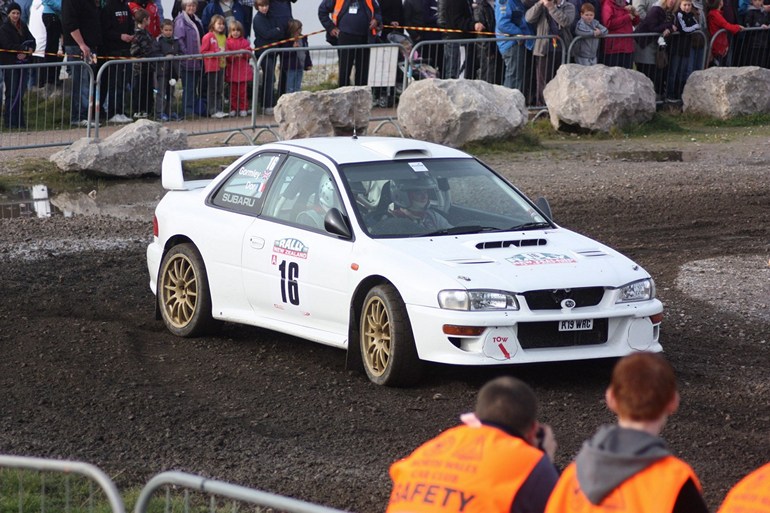Background
Subaru’s first serious campaign in rallying came in 1989, with the launch of Subaru Technica International and the involvement of Prodrive, which led to the creation of the Group A Subaru Legacy RS rally car. The Legacy was powered by a longitudinally mounted boxer engine, which despite having the benefit of a low centre of gravity, ultimately lacked power and suffered from repeated drive train issues. Prodrive worked on the car over the next few years, but the problems took a long while to sort resulting in the car’s sole win ironically coming on its last outing.
Prodrive’s experience of building rally cars told them that the way forward was a smaller, more agile car and work on a Group A Impreza rally car began. This car appeared towards the end of 1993 and had a more neutral front/rear weight distribution and featured active differentials. The car’s first outing was on the 1000 Lakes Rally and in the hands of Ari Vatanen finished 2nd overall.
In 1997 the FIA changed the regulations of rallying, with Group A being replaced with World Rally Car. These changes gave teams much greater freedom in terms of construction design and materials. This new freedom led Prodrive to totally redesign the car, launching the WRC97, which featured modified camshafts, cylinder ports and combustion chambers. which saw increases in both power and torque.
In 1998 the Impreza WRC98 replaced the 97 and saw the introduction of computer controlled active front, centre and rear differentials, and an electronic throttle. Not perhaps surprisingly mechanical failures were common, which prevented the team from challenging for the world title.
This Car
Was originally built in 1997 for Kenneth Eriksson being used on the Thousand Lakes and Network Q rallies, neither of which it finished due to engine failures on both occasions. The car had better success in the hands of Colin McRae, winning the 1998 Portuguese rally.
After that the car passed into the private hands of Frederic Dor a wealthy French industrialist who had Prodrive strip, rebuild and upgrade it to 1998 spec, before using it on the following 1999 events Portugal, Acropolis, New Zealand, Finland and Australia, finishing 20th, 10th, 24th, 32nd and 32nd respectively. In 2000 it only entered one event, the Safari, where it failed to finish due to turbo troubles.
Technical
Engine : four-cylinder, 2ltr, boxer, longitudinally mounted in the front of the car, twin overhead camshafts, four valves per cylinder, 300+ bhp
Induction : Fuel Injected, Normally Aspirated

